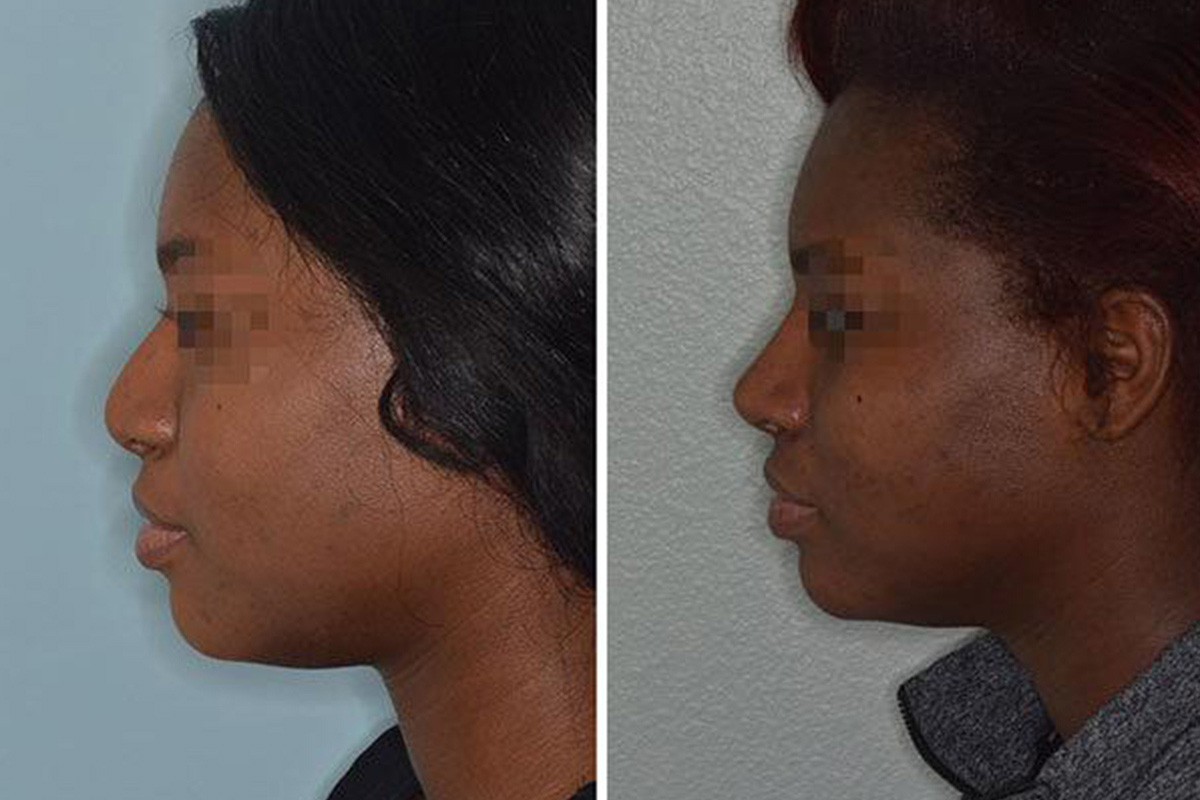African American Rhinoplasty
by Admin
Posted on 07-12-2024 06:53 AM

Rhinoplasty, often called a nose job, is a popular cosmetic procedure aimed at improving the appearance and function of the nose. This surgery can address various concerns, such as size, shape, and overall balance of the facial features. For African Americans, rhinoplasty can be tailored to meet unique aesthetic goals while respecting individual ethnic characteristics.
It's important to note that every nose is different, and the approach to rhinoplasty for African Americans might differ from other ethnic groups. For instance, African American noses typically have wider nasal bases and a lower nasal bridge. Understanding these differences is crucial for achieving a natural-looking result that enhances a patient's beauty.
Why Choose Rhinoplasty?
Many individuals consider rhinoplasty to boost their confidence and address personal insecurities about their appearance. A well-executed rhinoplasty can lead to enhanced facial harmony and improved self-esteem. It's also common for people to seek this surgery for functional reasons, such as correcting breathing issues due to structural nasal problems.
For African American patients, cultural and family backgrounds may influence their aesthetic preferences. Therefore, it’s essential to communicate openly with a surgeon about desired outcomes to ensure the best results. Discussing specific features you want to maintain or change can lead to a more satisfying experience.
Finding the Right Surgeon
Choosing a qualified surgeon is a key step in the rhinoplasty process. Look for a board-certified plastic surgeon with experience in performing surgeries on African American patients. This expertise ensures that the surgeon understands the unique structural aspects and aesthetic preferences associated with African American rhinoplasty.
During your consultation, ask about the surgeon's previous work, particularly with patients of your ethnic background. A portfolio of before-and-after photos can provide insight into their aesthetic style and surgical capabilities. This step is crucial for knowing you’re in good hands as you move forward with your surgery.
Consultation Process
The consultation process is an opportunity to discuss your goals and expectations. The surgeon will evaluate your nose's structure and your overall facial features. They may also suggest a digital simulation to give you a visual idea of potential outcomes.
Be prepared to discuss your medical history, including any previous surgeries, allergies, or medications you’re taking. This information helps the surgeon assess your candidacy for the procedure and devise a personalized surgical plan.
Risks and Considerations
Like any surgery, rhinoplasty comes with potential risks. Common risks include infection, scarring, and dissatisfaction with the aesthetic outcome. It’s vital to discuss these risks thoroughly with your surgeon. Understanding what to expect can help alleviate fears and lead to a more positive experience.
- Infection
- Scarring
- Breathing difficulties
- Unevenness in the nose
Additionally, keep in mind that results may take time to fully manifest. Swelling can last for several months, so patience is key. Most importantly, trust your surgeon's guidance and follow post-operative care instructions to ensure the best possible healing process.
Post-Operative Care
After rhinoplasty, proper care is essential for recovery and achieving optimal results. Your surgeon will provide specific instructions, which may include avoiding strenuous activities and taking prescribed medication for pain management. Following these guidelines helps minimize complications and promotes healing.
It's also crucial to attend all follow-up appointments. These visits allow your surgeon to monitor your recovery and address any concerns you might have. Remember, the journey to your new nose doesn’t end at surgery; it's a process that requires attention and care.
Final Thoughts
African American rhinoplasty can transform lives by enhancing appearance and boosting confidence. This procedure is not just about altering the nose but ensuring that the result complements the individual's unique features. By choosing a skilled surgeon and following the right steps, you can achieve the beautiful and natural-looking results you desire.
If you're considering rhinoplasty, I encourage you to seek out an experienced surgeon and have open discussions about your goals. With the right approach, you can achieve a look that feels authentic and true to you!
Frequently Asked Questions (FAQs)
- What is rhinoplasty?
Rhinoplasty, often referred to as a nose job, is a cosmetic procedure aimed at improving the appearance and function of the nose, addressing concerns like size, shape, and balance of facial features. - How is rhinoplasty different for African Americans?
Rhinoplasty for African Americans may differ due to unique structural characteristics, such as wider nasal bases and lower nasal bridges, which should be respected to achieve natural-looking results. - Why do people choose rhinoplasty?
Individuals often seek rhinoplasty to enhance their confidence, address insecurities, achieve better facial harmony, or correct functional issues like breathing problems. - How can I find the right surgeon for African American rhinoplasty?
Look for a board-certified plastic surgeon with experience in performing rhinoplasty on African American patients, and review their portfolio of before-and-after photos to assess their aesthetic style. - What should I expect during the consultation process?
The consultation involves discussing your goals, evaluating your nose's structure, and possibly seeing a digital simulation of potential outcomes, along with reviewing your medical history. - What are the risks associated with rhinoplasty?
Common risks include infection, scarring, breathing difficulties, and dissatisfaction with outcomes. It is important to discuss these risks with your surgeon. - What is involved in post-operative care after rhinoplasty?
Post-operative care includes following specific recovery instructions from your surgeon, attending follow-up appointments, and managing pain as prescribed to promote healing.
